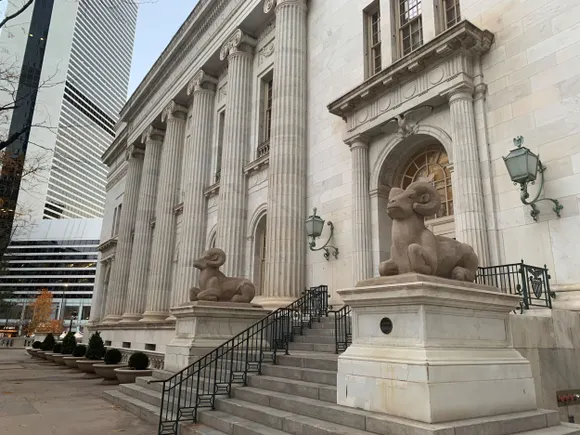The health of terrestrial ecosystems determines the stability of our planet’s climate, food systems, and water cycles. Forests, wetlands, grasslands, and mountains provide the air we breathe, the food we eat, and the resources upon which human civilization depends. The fifteenth Sustainable Development Goal (SDG 15) — Life on Land — seeks to protect, restore, and promote sustainable use of terrestrial ecosystems, sustainably manage forests, combat desertification, and halt and reverse land degradation and biodiversity loss by 2030.

Yet, despite growing awareness, terrestrial ecosystems continue to deteriorate at alarming rates. According to the United Nations Convention to Combat Desertification (UNCCD, 2024), over 75% of the Earth’s land areas are degraded, affecting more than 3 billion people. Deforestation, agricultural expansion, urbanization, and illegal wildlife trade are destroying natural habitats and accelerating biodiversity loss. SDG 15 thus calls for urgent global and local action to safeguard land-based ecosystems — not only for environmental reasons but also for human survival and sustainable development.
Understanding SDG 15
Land ecosystems provide crucial ecosystem services — from carbon sequestration and water purification to soil fertility and climate regulation. Forests, which cover about 31% of Earth’s land area, support more than 80% of terrestrial biodiversity and serve as a major carbon sink. However, unsustainable agricultural practices, industrial expansion, and mining have led to extensive deforestation and land degradation.
Biodiversity — the variety of life on Earth — underpins ecosystem resilience. Its loss threatens food security, health, and livelihoods. SDG 15 integrates the goals of international agreements like the Convention on Biological Diversity (CBD), UNCCD, and the Convention on International Trade in Endangered Species of Wild Fauna and Flora (CITES) to ensure holistic conservation and sustainable land use.
Targets of SDG 15
The United Nations outlines several key targets for SDG 15 to be achieved by 2030:
- Ensure the conservation, restoration, and sustainable use of terrestrial and inland freshwater ecosystems and their services.
- Promote sustainable management of all types of forests, halt deforestation, restore degraded forests, and substantially increase afforestation and reforestation.
- Combat desertification, restore degraded land and soil, and strive for a land-degradation-neutral world.
- Ensure the conservation of mountain ecosystems, including their biodiversity, to enhance their capacity to provide essential services.
- Take urgent and significant action to reduce the degradation of natural habitats and halt biodiversity loss.
- End poaching and trafficking of protected species and address the demand for illegal wildlife products.
- Integrate ecosystem and biodiversity values into national and local planning, development processes, and poverty reduction strategies.
- Mobilize resources to finance sustainable forest management and support conservation in developing countries.
- Enhance global support for halting biodiversity loss through scientific cooperation and technology transfer.
These targets reflect the interdependence between ecological preservation, sustainable development, and human well-being.
Global Progress and Challenges
The world has made some progress in halting deforestation and expanding protected areas. As of 2023, more than 16% of terrestrial areas were designated as protected lands. Efforts such as reforestation campaigns, community forestry, and ecosystem restoration initiatives have gained global attention. The UN Decade on Ecosystem Restoration (2021–2030) aims to restore 350 million hectares of degraded land, creating jobs and combating climate change.
However, progress remains insufficient. The Food and Agriculture Organization (FAO) reports that approximately 10 million hectares of forest are still lost annually, primarily due to agricultural expansion and logging. The Global Assessment Report on Biodiversity (IPBES, 2019) warns that one million species are at risk of extinction, many within decades. Land degradation costs the global economy over $6 trillion per year, reducing agricultural productivity and exacerbating poverty.
Climate change further intensifies these challenges, contributing to droughts, soil erosion, and desertification. Sub-Saharan Africa, South Asia, and Latin America are particularly vulnerable due to reliance on land-based livelihoods. Unsustainable consumption patterns in developed countries also drive resource extraction and deforestation in developing regions.
Strategies for Achieving SDG 15
- Sustainable Forest Management
Implementing community-based forest management, promoting agroforestry, and enforcing anti-deforestation laws are critical to protecting forests. Certification schemes like the Forest Stewardship Council (FSC) encourage responsible timber production. - Land Restoration and Soil Conservation
Rehabilitating degraded lands through reforestation, soil conservation techniques, and sustainable agriculture can restore productivity and ecosystem balance. Initiatives such as The Great Green Wall of Africa aim to restore 100 million hectares of degraded land across the Sahel region. - Combating Desertification
Sustainable land management practices, such as crop rotation, conservation tillage, and water harvesting, help combat desertification. Early warning systems for droughts can enhance resilience. - Biodiversity Conservation
Expanding and effectively managing protected areas, wildlife corridors, and nature reserves can safeguard species. Integrating biodiversity into urban planning and infrastructure design also helps reduce habitat loss. - Combating Illegal Wildlife Trade
Strengthening enforcement of international agreements like CITES, increasing penalties for poaching, and supporting alternative livelihoods for local communities can reduce wildlife trafficking. - Integrating Ecosystem Values into Policy
Governments must integrate ecosystem services into national accounts and decision-making. Green accounting and environmental impact assessments (EIAs) ensure that economic development respects ecological limits. - Community and Indigenous Participation
Indigenous peoples and local communities are effective stewards of biodiversity. Recognizing their land rights and traditional knowledge is vital for conservation success. - Financing and Global Partnerships
Increased investment in conservation and restoration is essential. Mechanisms like REDD+ (Reducing Emissions from Deforestation and Forest Degradation) provide financial incentives for forest protection. - Education and Awareness
Environmental education promotes stewardship and behavioral change. Awareness campaigns about biodiversity, waste reduction, and sustainable resource use can mobilize citizens toward conservation.
Case Studies and Best Practices
- Costa Rica reversed deforestation through payments for ecosystem services (PES) and strong environmental legislation, doubling its forest cover since the 1980s.
- China’s Grain-for-Green Program has restored over 25 million hectares of degraded land by converting farmlands back to forests.
- Kenya’s Community Forest Associations empower local people to co-manage forests, balancing livelihoods and conservation.
- India’s Green India Mission aims to increase forest cover and enhance ecosystem services as part of its climate strategy.
The Way Forward
Achieving SDG 15 requires integrating ecosystem protection into all aspects of development — from agriculture and infrastructure to education and finance. Governments must strengthen land-use planning, enforce anti-deforestation laws, and invest in ecosystem restoration. Global cooperation and financing are crucial to support developing nations in implementing sustainable land management.
Private sectors should adopt nature-positive business models, ensuring supply chains do not contribute to deforestation or habitat destruction. Individual actions, such as responsible consumption, tree planting, and advocacy, also play a role in restoring the planet’s ecological balance.
Conclusion
SDG 15: Life on Land represents humanity’s duty to live in harmony with nature. Healthy terrestrial ecosystems are the foundation of life — sustaining biodiversity, regulating climate, and supporting livelihoods. Yet, human activity continues to push planetary boundaries. Achieving SDG 15 requires a transformative shift from exploitation to restoration, from degradation to regeneration.
Protecting and restoring land is not only an environmental goal but a moral and economic imperative. It is the key to ensuring food security, climate stability, and sustainable prosperity for future generations. The message of SDG 15 is clear: by protecting life on land, we secure the future of all life on Earth.






















